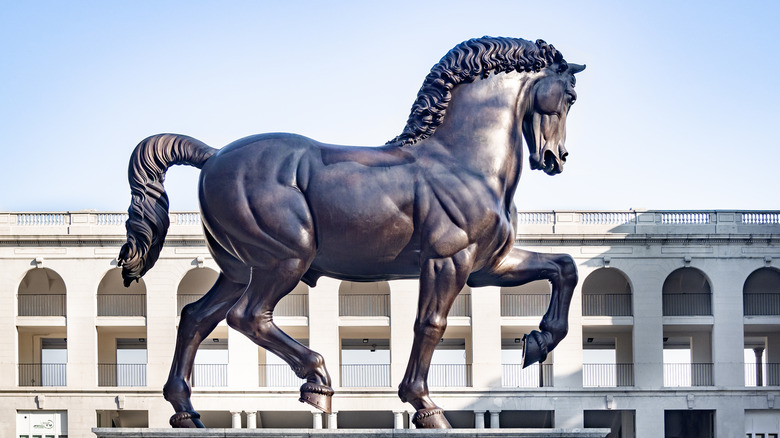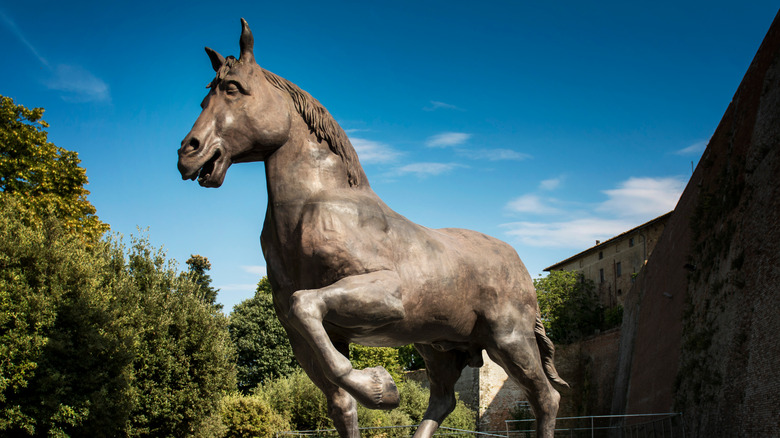The Tragic Way Leonardo Da Vinci's Biggest Project Was Destroyed
Leonardo da Vinci is perhaps one of the greatest minds to ever grace the Earth. A true Renaissance man in every sense of the word, da Vinci was an inventor, painter, sculptor, scientist, architect, and much more, contributing massive breakthroughs or legendary works of art in every discipline he practiced. He was also a perfectionist, perhaps unsurprisingly, taking three years to finish "The Last Supper," one of his most famous paintings, and it wasn't uncommon for him to spend over a year on other works of art (via Mental Floss).
The project he spent the most time on, however, took long enough that he could have painted "The Last Supper" nearly six times over — and tragically, he never lived to see it finished. When the Duke of Milan commissioned da Vinci to create a giant 20-foot statue of the Duke's father on horseback, the genius polymath set to work for a whopping 17 years, even when the sculpture was simplified to just focus on the horse. Yet war would rear its ugly head, and the work-in-progress would become a very valuable non-human casualty.
The Horse was finished centuries later
The Duke of Milan, who sponsored da Vinci, certainly had ambitions for the Renaissance man. On top of his giant horse statue commission, the Duke also had da Vinci devise new city plans, castle defenses, weaponry, puzzles, poems, stage sets, and parties, all while he was painting "The Last Supper" and a series of portraits (via Da Vinci Science Center). While da Vinci toiled away at these other tasks, it's easy to see how a giant clay horse could take 17 years to build, especially as da Vinci prepared to cast it in bronze with an innovative new technique he had developed because, well, that's the kind of thing da Vinci does.
When the French invaded Milan in 1499, however, they found that a giant clay horse was the perfect target practice for their archers, and reduced the proud equestrian piece into a meager pile of clay. Da Vinci never returned to the project, which remained a distant memory until an American pilot named Charles Dent was inspired to recreate the horse in 1977. After decades of research, sculptor Nina Akamu began to rebuild the Horse, and in 1999, exactly 500 years after it had been dismantled, the horse was finally finished.

